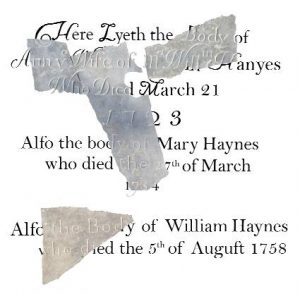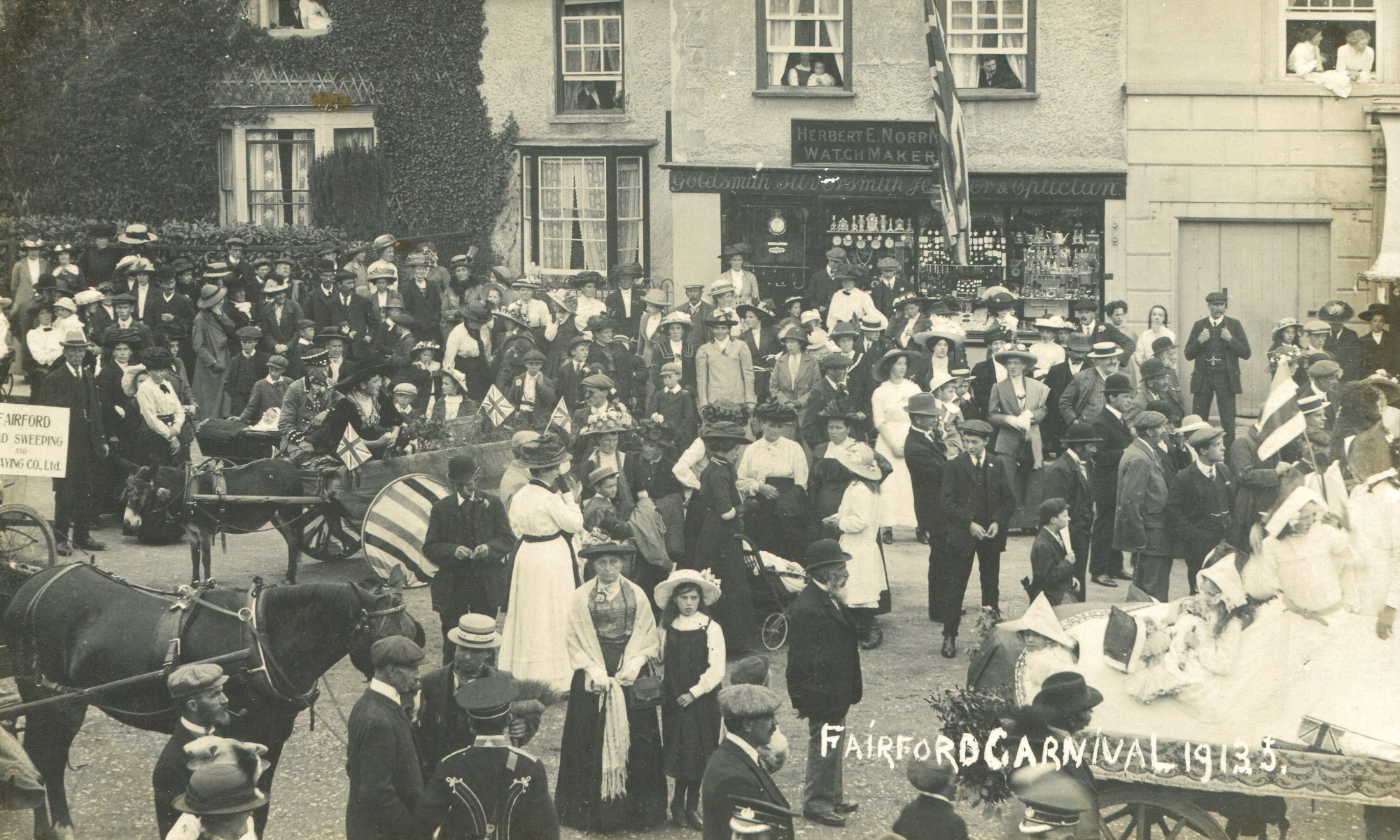During the replacement of the nave floor in St Mary’s during 2009 the workmen discovered several fragments of stone that carried parts of an inscription. The fragments were found beneath the existing surface and had been used as part of the foundations for the floor. Four of the pieces (the largest measuring about 14 inches (35 cm) by 7 inches (18 cm) and about one and a half inches (4 cm) thick were cleaned up to clearly reveal several words and two dates. The surface of the stone had been finished to a very smooth surface with fine lettering but the reverse side was very rough and uneven indicating that it had probably been a grave slab rather than a vertical freestanding headstone. A study of Bigland’s ‘Account of the Parish of Fairford’ of 1791 which lists all the major tombs in the church and the churchyard visible at that date solved the riddle.
 The surviving lettering matched perfectly the inscription on the grave of William and Ann Haynes and their daughter Mary who died in 1758, 1723 and 1754 respectively. Bigland records this as “On a flat stone in the South Aisle” of the church. It would appear that the Haynes stone was removed and broken up to be used as rubble during the reflooring of the church, possibly in 1854 when the church seating was replaced. Unfortunately this is by no means an isolated example of the length to which the Victorians would go to ‘beautify’ our churches. William Haynes had been a churchwarden for many years but even this didn’t stop his memorial being smashed up after less than 100 years.
The surviving lettering matched perfectly the inscription on the grave of William and Ann Haynes and their daughter Mary who died in 1758, 1723 and 1754 respectively. Bigland records this as “On a flat stone in the South Aisle” of the church. It would appear that the Haynes stone was removed and broken up to be used as rubble during the reflooring of the church, possibly in 1854 when the church seating was replaced. Unfortunately this is by no means an isolated example of the length to which the Victorians would go to ‘beautify’ our churches. William Haynes had been a churchwarden for many years but even this didn’t stop his memorial being smashed up after less than 100 years.
The surviving pieces of the Haynes family gravestone can now be seen in the Archive Room in the Community Centre.
One wonders what else lies beneath the pavement in St Mary’s!
